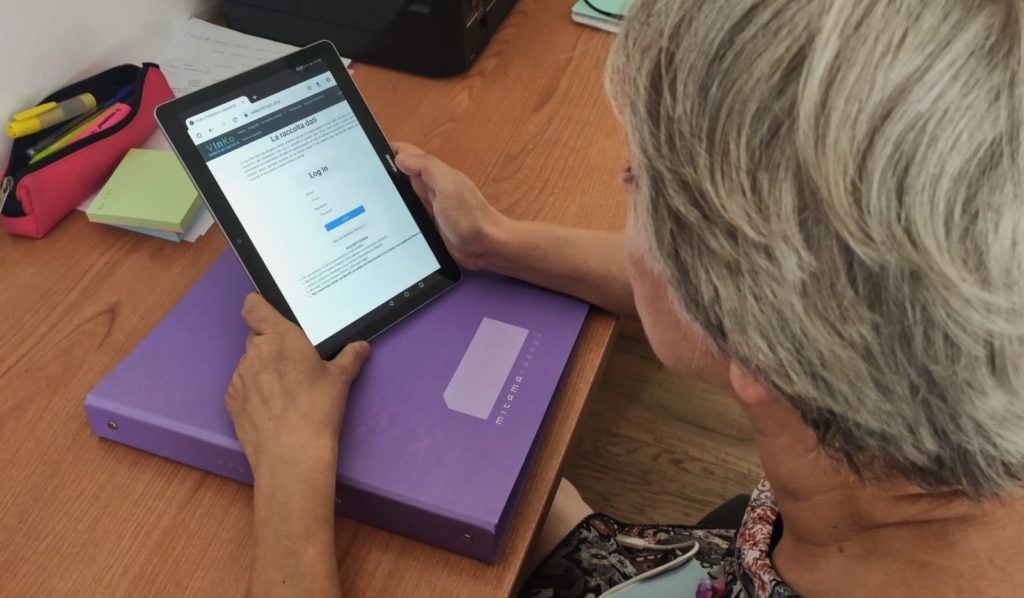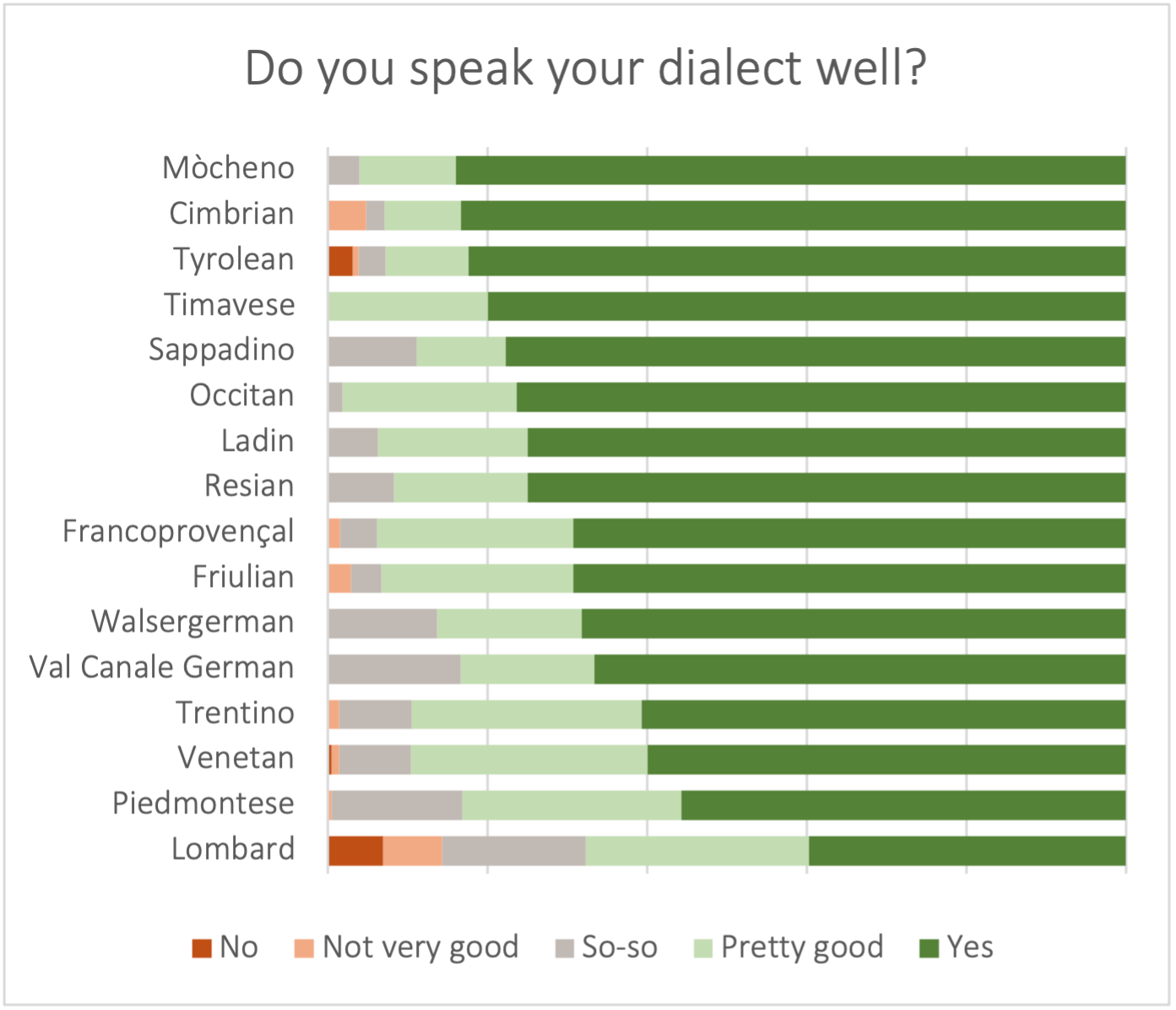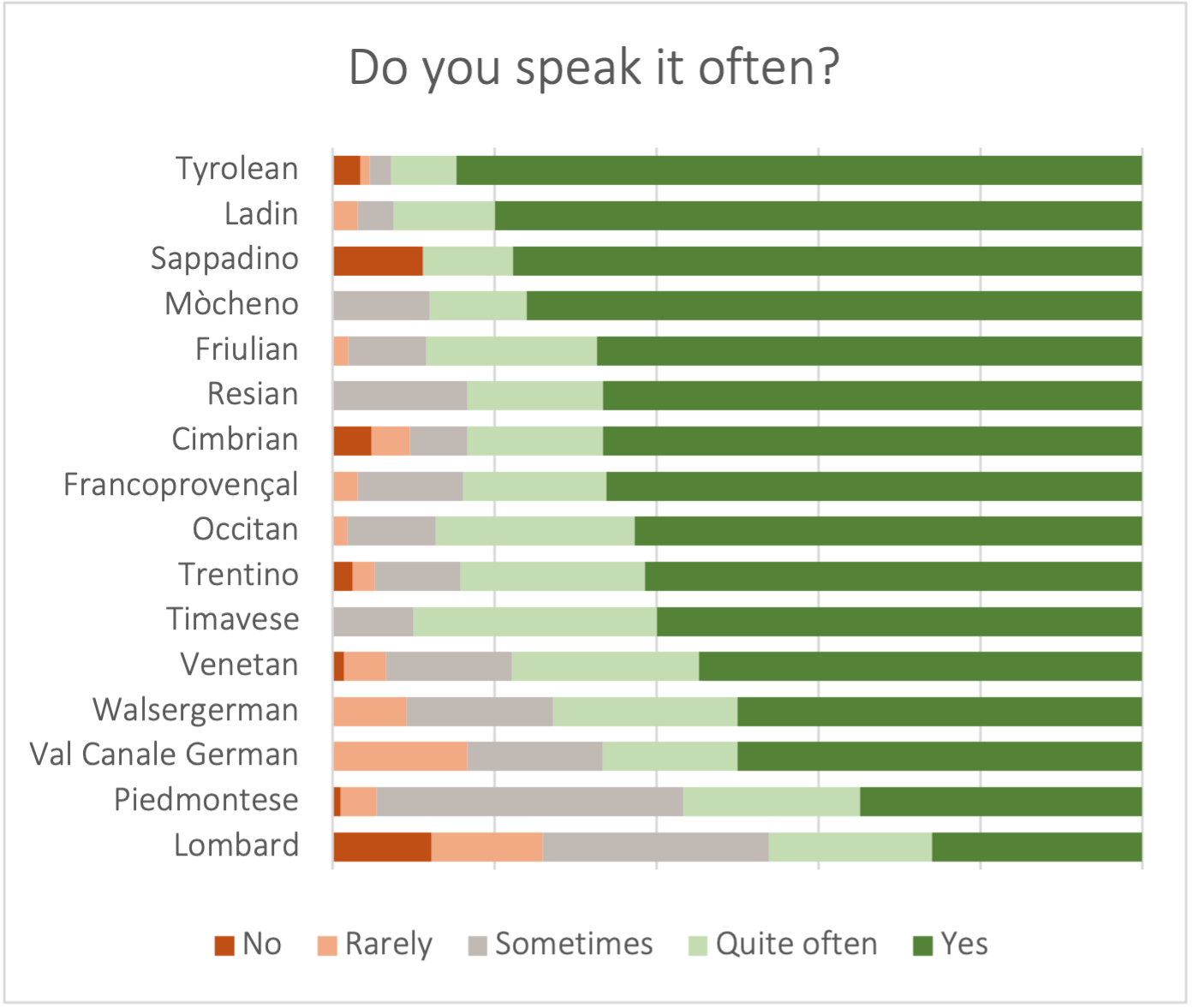Data collection for AlpiLinK started in July 2023 with the opening of the online questionnaire and ended in June 2025. In the two years from July 2023 to June 2025, there has been a total of 1781 participants from 766 different locations. Speakers from all 18 different language varieties introduced in the section “Our Varieties” have participated, and they contributed 57,108 audio files for research and the interested general public.
Two years of data collection
Participants, locations and audio files

The average age of participants is 48.9 years, so quite close to the average age in Italy, which is 46.6 years (ISTAT, 2024). The youngest participant is a speaker of Francoprovensal of 4 years old and the oldest speaker is 101 years old, from Val Badia, and speaks Ladin. If we look at the different linguistic varieties, Walser German has the highest average age at 74.2 years, while the youngest group are the Ladin speakers with an average of 41 years.
The gender distribution is very balanced with 49.5 % identifying as male, 49,6 % female and 0,9% selecting ‘other’. This holds for almost all language varieties except Sappadino (F- 67 %, M – 33 %), Mòcheno (F – 68 %, M – 32 %) and, most of all, Resian (F – 83 %, M – 17 %) and Timavese (F – 80 %, M – 20 %), in which the female contribution outnumbers by far the male one.
At the start of the questionnaire participants are presented with some questions regarding their language skills and usage, e.g., ‘Do you speak the dialect well/often?’. See the figures below for a full overview of all the varieties and the answers to these questions.
Independently from the language variety, the vast majority of our participants are confident in their linguistic competency indicating very good (65.7 %, dark greeen) or good (22.9 %, light green) language skills. With respect to language usage, in general and in the specific situations in the family and with friends, we see two interesting tendencies. On the one hand, the speakers of the varieties which are officially recognzied as minority languages declare more language usage than the speakers of the dialects. On the other hand, there is a geographic logic in the sense that the language usage decreases from the east to the west of our area. The Tyrolean dialects in South Tyrol stand out with respect to very high precentages of dialect usage in all situations. (Saurano and Val Canale Slovenian are non considered in the figures beause they are represented both by just a single speaker.).
Most audio file are available via the interactive in the “Listen & Explore” section. For access to all data, go to the AlpiLinK corpus via the following link: https://doi.org/10.5281/zenodo.8360169.
Bibliographical reference
- Rabanus, Stefan, Anne Kruijt, Birgit Alber, Ermenegildo Bidese, Livio Gaeta, and Gianmario Raimondi. 2025. AlpiLinK Corpus 1.2.0. In collaboration with Paolo Benedetto Mas, Sabrina Bertollo, Serena Bissolo, Angelica Bonelli, Dario Capelli, Jan Casalicchio, Raffaele Cioffi, Patrizia Cordin, Silvia Dal Negro, Ilaria Driussi, Sara Erriu, Alexander Glück, Joachim Kokkelmans, Adriano Murelli, Andrea Padovan, Aline Pons, Matteo Rivoira, Marta Tagliani, Caterina Saracco, Alessandra Tomaselli, Ruth Videsott, Alessandro Vietti & Barbara Vogt. https://doi.org/10.5281/zenodo.8360169.




